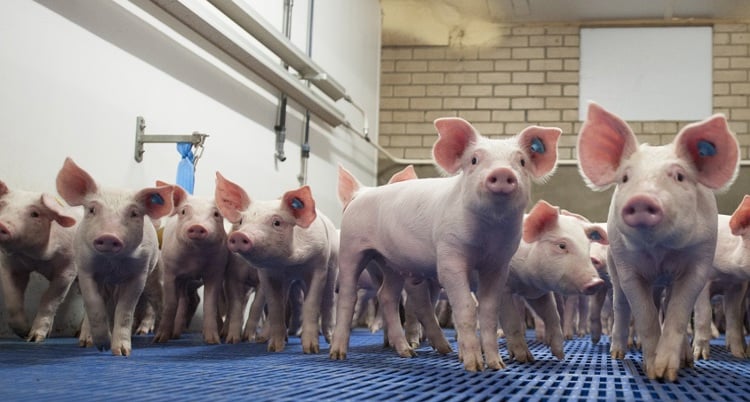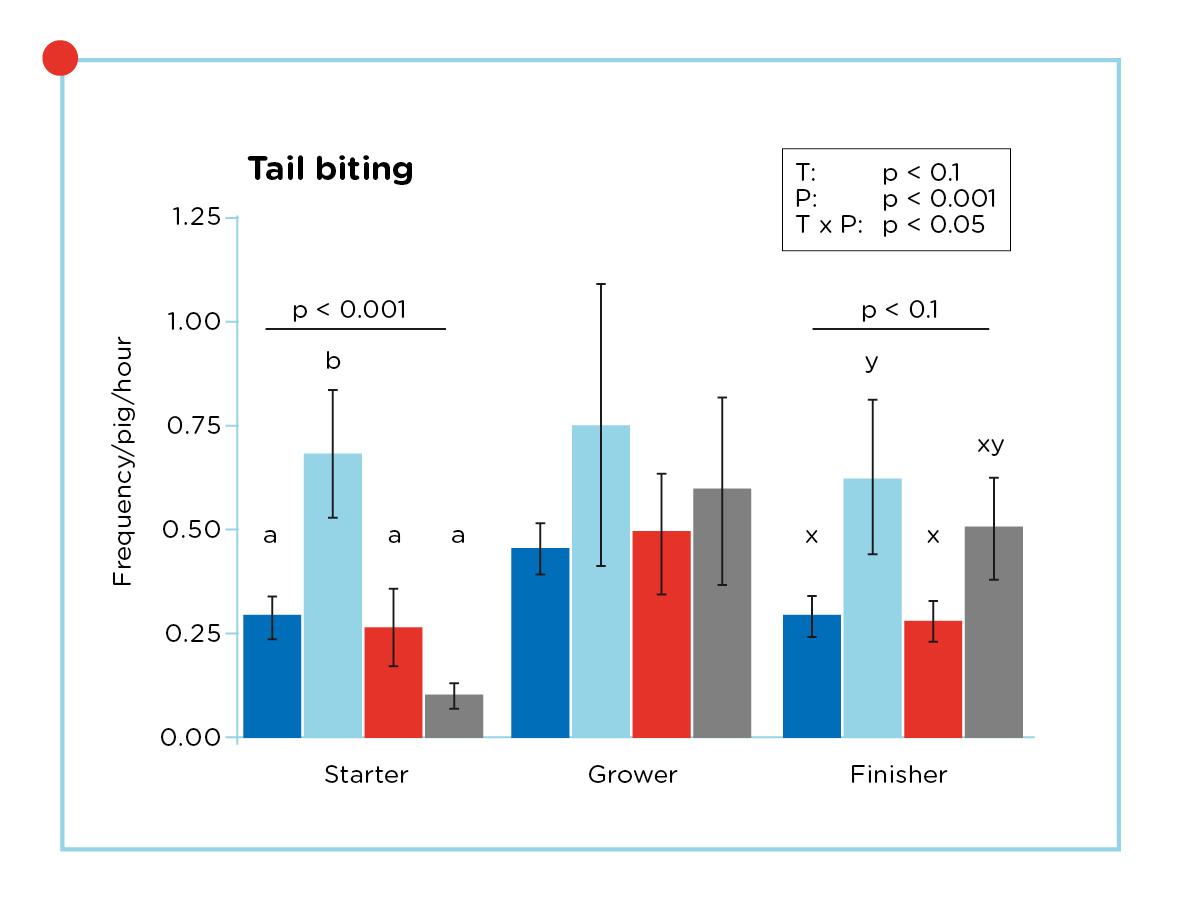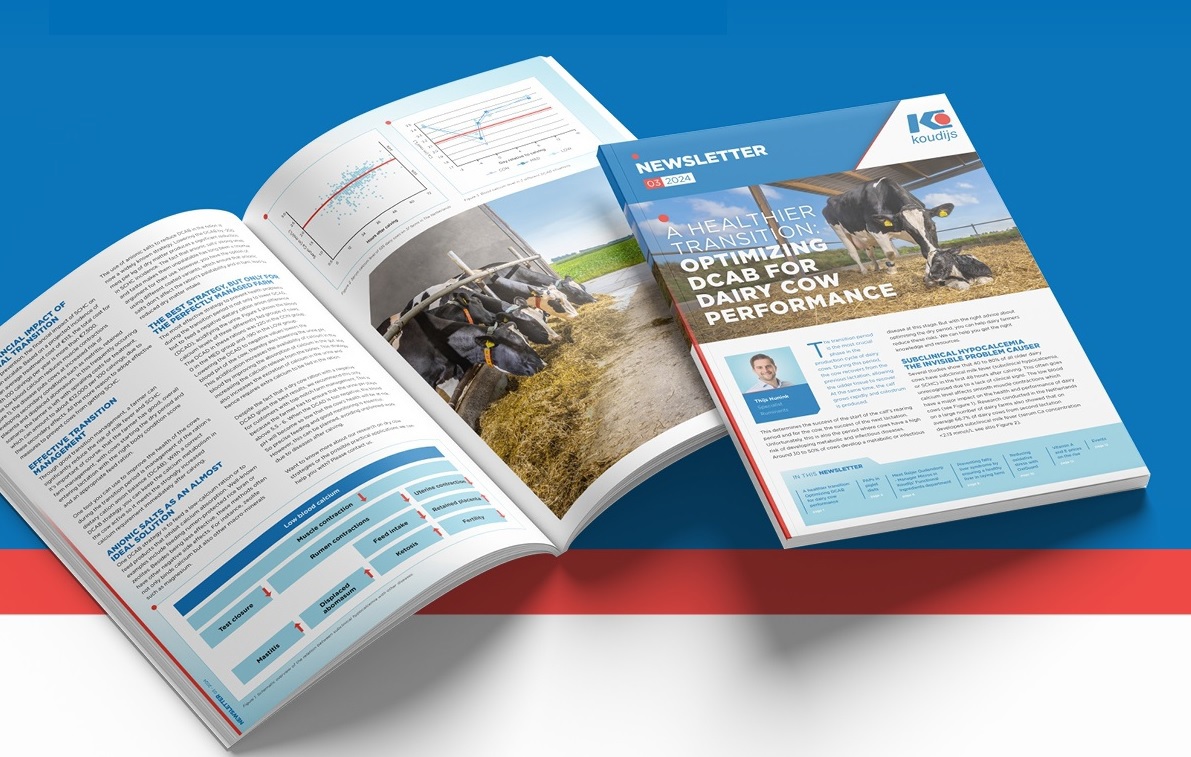Reducing protein levels in pig feed without losing performance
Koudijs, together with other stakeholders, is part of a multi-year study into the relationship between nutrition, management and animal behaviour in pigs. This research is being conducted in 4 phases. The results of the first phase were recently published by Wageningen University & Research (Minussi et al. 2023 Amino acid supplementation counteracts negative effects of low protein diets on tail biting in pigs more than extra environmental enrichment. Scientific Reports 13: 19268). This article describes the results along with an important additional aspect.

The effects of lower protein levels offset by higher amino acid levels
The experiment was set up with 1 control group and 3 different treatments, and was carried out with 10-week-old piglets with intact tails from a commercial farm:
- NP with a normal CP diet with SID lysine level for optimal growth.
- LP with 20% reduction of CP and 20% reduction of SID lysine compared to NP.
- LP+ with a low CP diet with 20% reduction of CP and same SID lysine level compared to NP across all growth phases.
- LP-E+ with 20% reduction of CP and 20% reduction of SID lysine compared to NP but extra environment enrichment was offered.
Diagram 1 and Table 2 show the results of the study. As expected, a 20% reduction in amino acid levels had an effect on the results and tail biting behaviour, but the effect was fully compensated for by adding synthetic amino acids.

Environment enrichments only temporary effect
What's also striking is that the provision of various environmental enrichment materials only had a temporary effect. In the starter period, the lower protein level was compensated for when the group received extra enrichment in the pen, i.e. a rope with nodes, a wooden beam and 350 grams of chopped straw daily. The results also show that in all treatments there was a higher incidence of tail biting in the grower 2 period. This might be a sign that the pigs needed a higher level of amino acids in this period.

Amino acid synthesis plays an important role in producing healthy animals that deliver top performance in a cost-effective way
The benefits of using synthetic amino acids
The effect of amino acids on animal behaviour is an interesting result. Using lower protein together with higher synthetic amino acid levels also leads to a reduced risk of undigested protein and lower internal health. Undigested protein can cause bacterial growth in the intestine along with higher ammonia levels in and around your farm. But the most important consideration is still the financial aspect.
You can achieve a significant reduction in costs by using synthetic amino acids. This obviously depends on the price and availability of raw materials and amino acids in your specific situation. But one thing is certain: the use of synthetic amino acids becomes increasingly interesting over the long term. Protein-rich raw materials have become relatively more expensive whilst more and more synthetic amino acids are coming onto the market. Twenty years ago, tryptophan was sometimes used in fattening pig feeds. Today, valine is commonly in use and isoleucine is also attractive in some cases.
Our recommendation: guarantee perfect dosing en mixing by avoiding small inclusions
In discussing the above research and writing this article, our team identified another important aspect. Amino acid synthesis plays an important role in producing healthy animals that deliver top performance in a cost-effective way. For this reason. it's important that all required amino acids are available in the correct ratio at the same time, and that sufficient energy is available to ensure conversion. Homogeneous mixing of all amino acids is therefore extremely important.
Depending of the structure an possibilities of your factory it can be beneficial to include the smaller amino acids in your premix. Dosing is often not the biggest problem, but we know that with inclusions of less than 0.5 kg per ton, the homogeneity of the mixer deteriorates sharply. Table 3 calculates the savings in grower feeds when using amino acids. As mentioned, the differences depend on your specific situation and may vary over time. The table shows that using small inclusions of tryptophan and valine can save you serious money. Savings are slightly lower when using them in premix, but we believe that this is compensated for by better homogeneity and ultimately better performance of your pigs.

Premixes and Single Ingredients
Koudijs offers premixes, but we also trade in single ingredients such as amino acids. We have a lot of experience with producing feed and its effects on animal performance. Please feel free to contact us to discuss the application of amino acids in your specific situation.

Read the latest version of the Koudijs newsletter!
Read hereAbout the author

Bert de Jong
Do you have any questions or would you like more information? Get in touch with Bert.




